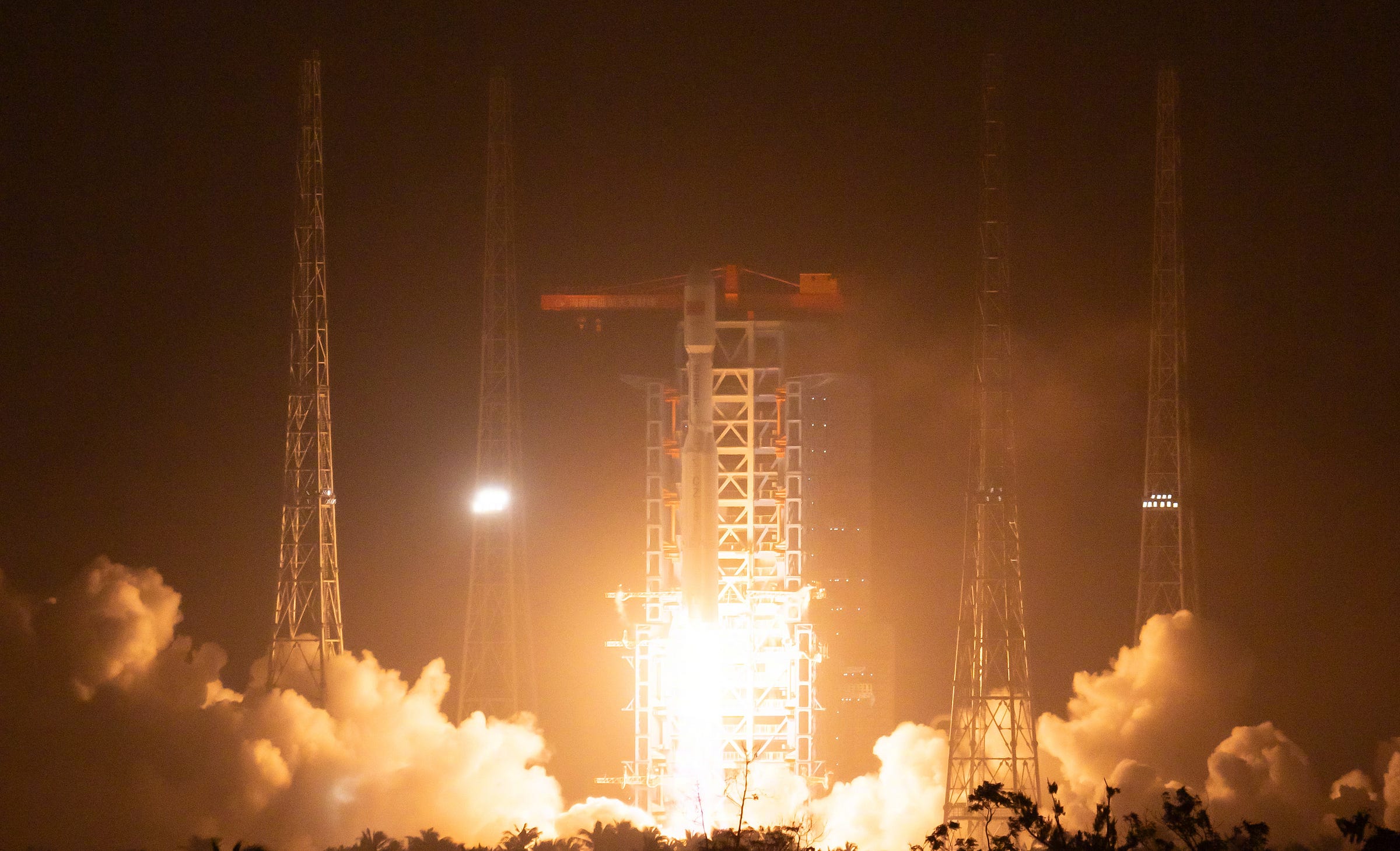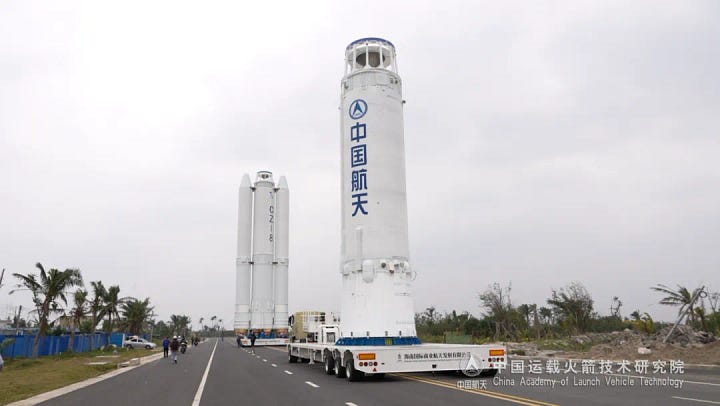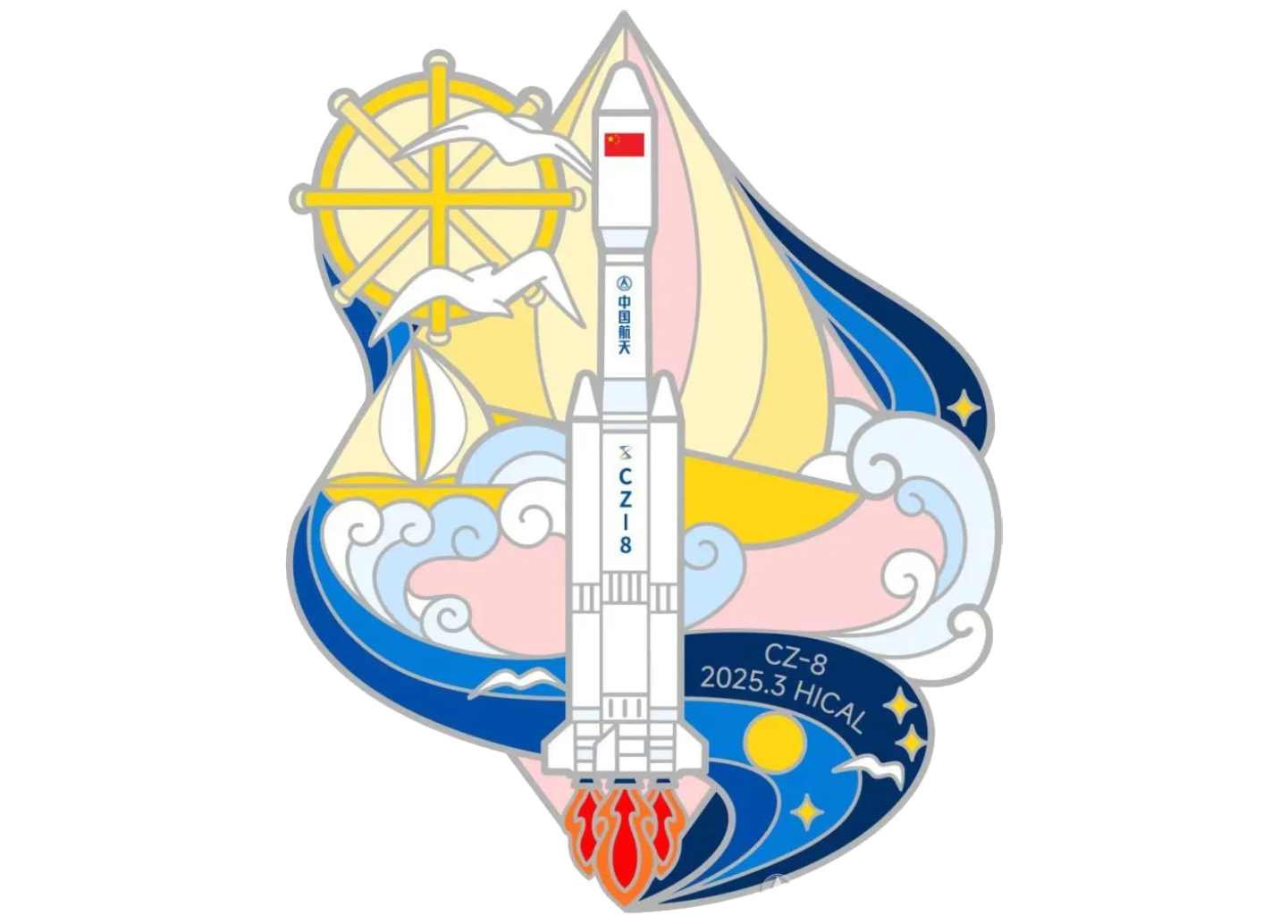Commercial Launch Pad 1 Enters Operation with Qianfan [Long March 8 Y6]
Wenchang Commercial has supported its first Qianfan launch mission.

On March 12th at 00:38 am China Standard Time (or March 11th at 16:38 pm Universal Coordinated Time), Commercial Launch Pad 1 at the Wenchang Commercial Space Launch Site supported its first mission. This mission was a Long March 8 carrying a batch of satellites into a polar orbit.
Atop of the Long March 8 were a batch of eighteen Qianfan satellites for the internet mega-constellation, said to be Polar Group 05. Following the Long March 8’s second-stage reaching orbit, all eighteen satellites were released where they will now maneuver into their operational orbits.
The Qianfan (千帆) mega-constellation, formerly called G60 Starlink and sometimes referred to as SpaceSail, is operated by Shanghai Spacesail Technologies Co Ltd, which the Shanghai municipal government partly backs. Qianfan is also part of Shanghai's plan to foster a strong space industry between 2023 and 2025. Longer-term plans for the constellation will have it provide regular internet coverage in China by the end of 2025, and regular internet coverage worldwide by the end of 2027. By the end of 2030, 15,000 satellites are planned to be in orbit.
Each Qianfan satellite is believed to weigh 300 kilograms with a 'flat pack' design to fit as many satellites as possible inside the rocket fairing. For maneuvering in orbit, each satellite has an electric hall-effect thruster burning krypton to generate 20 millinewtons of thrust, with a specific impulse of 1,385 seconds.
Last year, 108 Qianfan satellites were planned to be launched, with only 54 actually launched. For 2025, 648 satellites are set to be launched unless the satellites not launched last year are added for 702 satellites. This was the second Qianfan batch of the year, for 36 out of a possible 702 launched this year. As such, around thirty more launches of Qianfan satellite batches may take place this year, this could be accelerated by new privately-owned launch vehicles however. To date, 90 satellites have been launched for the Qianfan constellation since deployments began.
In its post-launch blog-post, the China Academy of Launch Vehicle Technology stated that with the success of this mission, the Long March 8 is ready to perform high-density launch missions throughout the remainder of the year and in those that follow. These high-density missions are expected to serve China’s mega-constellations and other commercial customers. Chief Designer of the Long March 8 series Song Zhengyu (宋征宇) also said the following:
“From the current domestic medium-sized carrier rockets of the same scale, the Long March 8 series rockets rank among the best in terms of their delivery efficiency and capacity, which not only can realize large-scale mass production, but also have the ability to carry out high-density launch missions. For China's satellite constellation construction, especially the constellation launch missions in the 1,100-kilometer orbit, the Long March 8 series of rockets have outstanding advantages"
If there are any problems with this translation please reach out and correct me.
As mentioned at the beginning, this was the first launch from Commercial Launch Pad 1 at the Wenchang Commercial Space Launch Site. This launch pad is solely dedicated to supporting launch missions of the Long March 8 series (consisting of the Long March 8 and 8A). According to the China Academy of Launch Vehicle Technology, this launch pad is said to be capable of supporting a launch every fourteen days for high-density launch missions.
Today’s launch was the 4th launch of the Long March 8, the 5th launch of the Long March 8 series, and the 563rd launch of the Long March launch vehicle series. This was also the 12th launch from China in 2025.
Liftoff video via International Rocket Launches on Youtube, as well as China航天 and 空天逐梦 on Weibo.
Check out the previous launch from Wenchang
Straight into Business with GuoWang! [Long March 8A Y1]
At 17:30 pm China Standard Time, or 09:30 am Universal Coordinated Time, on February 11th the first Long March 8A blasted off from LC-201 at the Wenchang Space Launch Site heading for low Earth orbit.
What is the Long March 8?
This section is for those less familiar with China's Long March series of launch vehicles.
The Long March 8 is poised to be a low Earth orbit workhorse for missions flying from Wenchang, with it being developed by the China Academy of Launch Vehicle Technology. This vehicle utilizes a two-and-a-half-stage design and is fueled by rocket-grade kerosene and liquid oxygen in its first-stage and boosters along with liquid hydrogen and liquid oxygen in the second-stage.
The payload capacity of the launch vehicle is currently as follows:
8,100 kilograms to low Earth orbit
5,000 kilograms to a 700-kilometer sun-synchronous orbit
2,800 kilograms to geostationary transfer orbit
1,500 kilograms to a trans-lunar trajectory

The Long March 8's boosters and first-stage are powered by YF-100 engines, with two engines on the first stage and one on each of the two boosters, generating a combined thrust of 490 tons at liftoff. The second-stage is equipped with two YF-75 engines which produce 17 tons of thrust.
On the launchpad, the Long March 8 stands at 50.34 meters tall and weighs 356,000 kilograms when fully fuelled. The first-stage has a diameter of 3.35 meters, the two boosters have a diameter of 2.25 meters, while the second-stage has a diameter of 3 meters, and the fairing has a believed diameter of 4.2 meters.
So far the Long March 8 has only flown from the Wenchang Space Launch Site, on the east coast of Hainan province.








![Straight into Business with GuoWang! [Long March 8A Y1]](https://substackcdn.com/image/fetch/$s_!PBW8!,w_1300,h_650,c_fill,f_auto,q_auto:good,fl_progressive:steep,g_auto/https%3A%2F%2Fsubstack-post-media.s3.amazonaws.com%2Fpublic%2Fimages%2F2a9db57e-768d-4c46-96a1-5c1904836704_2391x1504.jpeg)